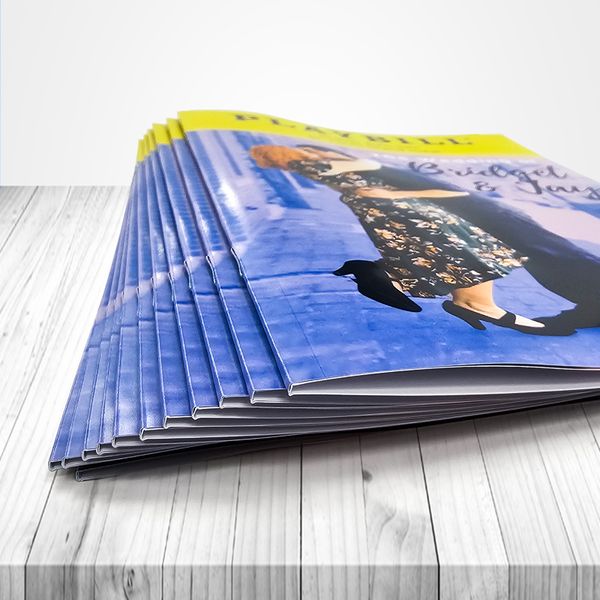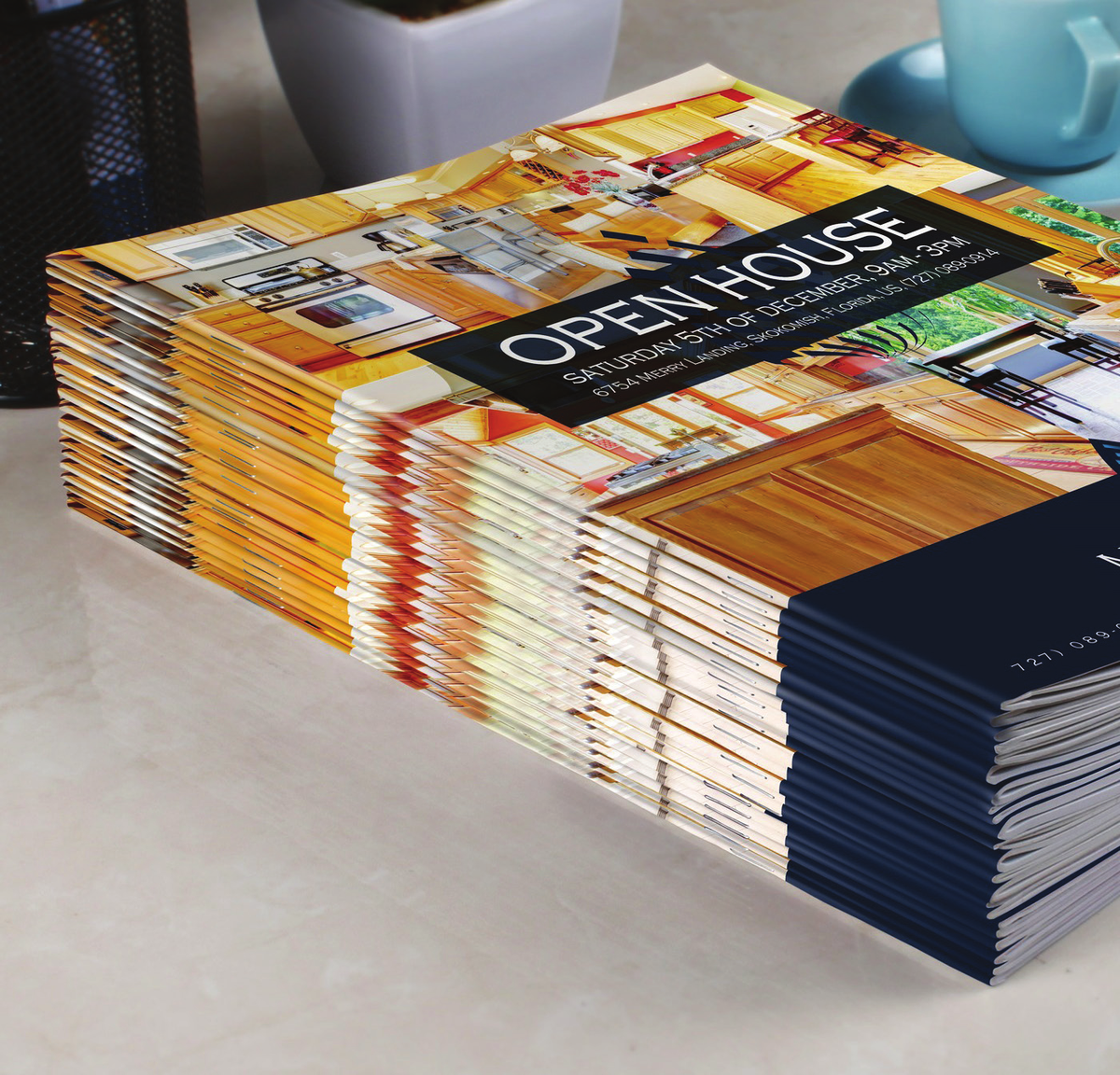Exploring the Latest Fads in Brochure Printing for Engaging Promotional Material
The landscape of brochure printing is developing, driven by the requirement for involving advertising content. Business are increasingly integrating interactive attributes and environment-friendly techniques into their layouts. Personalization and ingenious binding techniques are ending up being vital for brands intending to stick out. As these fads remain to develop, they are reshaping just how organizations connect with their audiences. Comprehending the implications of these changes can supply important insights into efficient advertising techniques.

The Rise of Interactive Pamphlets
Recently, a significant surge in the appeal of interactive pamphlets has actually arised, showing a change in consumer preferences towards engaging, multimedia experiences. These brochures often include components such as QR codes, enhanced truth functions, and multimedia links, boosting the reader's communication with the material. Businesses are progressively embracing this style for advertising materials, recognizing its performance in capturing focus and communicating information in an ingenious way.Interactive brochures not only serve to educate however likewise amuse, producing a memorable experience that typical print can not accomplish. They allow viewers to engage deeply with the product, frequently causing greater retention prices. As innovation proceeds to develop, the assimilation of electronic features into print media is most likely to expand, offering businesses new avenues to get in touch with their target market. This fad indicates a promising future for booklet printing, where interactivity ends up being an essential component of effective communication.
Eco-Friendly Printing Practices
The growing focus on green printing techniques is improving the pamphlet printing sector. Companies are significantly choosing sustainable product choices, energy-efficient printing methods, and recyclable completing options. This change not only decreases ecological influence however also interest ecologically mindful customers.
Lasting Product Choices
As customers significantly prioritize environmental duty, the demand for sustainable product options in pamphlet printing has risen. Businesses are now choosing recycled paper and eco-friendly inks, which considerably minimize ecological footprints. Numerous firms are sourcing products from responsibly handled woodlands, guaranteeing that their products are not just aesthetically pleasing however likewise sustainable. Additionally, the usage of biodegradable laminates and vegetable-based inks is coming to be extra widespread, showing a commitment to eco-conscious techniques. By picking sustainable materials, companies can improve their brand picture while appealing to eco-minded consumers. This shift not just sustains ecological preservation however also urges a round economy, making booklet printing a much more responsible option for promotional web content in today's market.
Energy-Efficient Printing Methods
Embracing energy-efficient printing strategies has come to be essential for companies intending to minimize their environmental effect. These techniques concentrate on lowering power usage throughout the printing process. Utilizing contemporary electronic printers, which frequently eat less energy than traditional methods, permits effective production with much less waste. Additionally, incorporating sophisticated software program remedies can enhance print runs, minimizing unneeded ink and paper use. Firms are also discovering using energy-efficient LED curing systems, which need substantially less energy than standard healing approaches. Training staff members on energy-saving methods can enhance overall efficiency. By executing these techniques, services not only add positively to the atmosphere but likewise commonly experience cost savings, resulting in a more sustainable and economically sensible operation.
Recyclable Finishing Options
Including recyclable completing choices is a significant action in the direction of lasting printing practices. Lots of organizations are progressively going with these green selections to lower ecological impact while preserving top quality discussion. Options such as water-based coatings, naturally degradable laminates, and recycled paper stocks are acquiring popularity, enabling brand names to communicate their commitment to sustainability. These coatings not only boost the visual appeal of pamphlets but also guarantee that they are eco liable. In addition, utilizing soy-based inks and minimizing plastic usage contributes to a greener production process. This trend mirrors a growing customer need for lasting products and motivates firms to adopt practices that line up with eco-conscious worths. Eventually, recyclable completing alternatives enable services to engage consumers while preserving the earth.
Customization and Personalization Trends
Personalization and personalization are ending up being progressively vital in the brochure printing industry. Tailored design choices enable consumers to produce unique products that mirror their private designs, while variable data printing enables the unification of personalized details for each and every recipient. These fads not only improve customer fulfillment however also drive interaction and loyalty.
Customized Layout Options
A growing number of companies are welcoming customized style options to boost their brochure printing projects. This trend mirrors a shift in the direction of producing products that reverberate even more deeply with target audiences. Business are progressively going with unique layouts, color pattern, and graphic components that straighten with their brand name identity and advertising and marketing goals. Furthermore, services are incorporating interactive attributes, such as QR codes and augmented reality elements, to engage readers in ingenious ways. By concentrating on tailored layout, companies can properly interact their messages while standing out in a congested market. These customized strategies not just raise the visual allure of pamphlets but additionally foster a more powerful link with potential consumers, webpage ultimately driving involvement and passion.
Variable Data Printing

Variable data printing is reinventing the way services come close to booklet manufacturing by enabling the production of extremely tailored products. This innovative technique enables the modification of content based on individual recipient data, tailoring messages to particular audiences. Firms can now integrate names, photos, and uses that reverberate with each recipient, boosting interaction and action rates. As customers significantly seek customized experiences, variable data printing comes to be a powerful tool for online marketers aiming to record attention and foster loyalty. On top of that, improvements in technology have actually made this process a lot more available and affordable, permitting even little businesses to utilize its benefits. Eventually, variable information printing represents a substantial fad in pamphlet printing, driving even more purposeful connections in between brands and their clients.
Ingenious Binding Techniques
Discovering new frontiers in pamphlet printing, innovative binding strategies are changing the means products are provided and experienced. Strategies such as lay-flat binding and saddle stitching are obtaining appeal, offering both capability and aesthetic charm. Lay-flat binding permits pages to open fully without the concession of losing material in the back, making it optimal for photography publications and portfolios. On the various other hand, saddle site sewing remains an affordable option for thinner booklets, giving a professional and clean finish.Additionally, one-of-a-kind binding approaches like spiral and wire-o binding add convenience and toughness, suiting different paper types and thicknesses. These approaches allow booklets to lie flat when open, enhancing visitor involvement. As companies look for to produce even more interactive and aesthetically appealing products, the development of binding methods remains to play an important function in booklet printing, making certain that marketing web content sticks out in a progressively open market.
Using Augmented Fact
Cutting-edge binding strategies have actually established the phase for the assimilation of augmented reality (AR) in booklet printing, enhancing the reader's experience past typical layouts. By including AR, marketing experts can develop immersive material that involves target markets in novel means. When users scan details images or QR codes within the booklet, they disclose interactive aspects such as videos, animations, or 3D versions, providing additional layers of information and entertainment.This modern technology not only astounds visitors but additionally fosters a much deeper connection with the brand name or message being shared. Business can use AR to display items at work, tell engaging tales, or deal individualized experiences tailored to specific choices. As the demand for unique advertising methods grows, the adoption of AR in booklet printing stands for a considerable fad, permitting companies to separate themselves and develop remarkable interactions with their target market. The future of pamphlet printing exists in this mix of print and electronic development.
Boosted Visual Layout Elements
Visual style elements play a crucial role in raising the impact of booklet printing, transforming average publications right into remarkable aesthetic experiences. Contemporary fads emphasize the combination of striking graphics, dynamic color pattern, and cutting-edge layouts that record the audience's focus. Developers are significantly utilizing high-grade pictures, infographics, and customized pictures to convey messages extra efficiently, making material extra engaging and memorable.Additionally, typography is getting increased emphasis, with different typeface styles and dimensions being utilized to develop power structure and guide viewers via the product. Using adverse room is likewise necessary, offering breathing space that boosts readability and visual appeal. The unification of distinctive coatings, such as matte or gloss lamination, includes a responsive measurement, further enchanting the target market. By utilizing these boosted visual style elements, marketing experts can create brochures that not only educate but likewise inspire activity, leaving a long-term impact on their target audience.
Multi-Purpose Brochure Formats
The evolution of brochure design has brought about the appearance of multi-purpose layouts that deal with diverse marketing demands. These innovative layouts offer numerous functions, making it possible for businesses to maximize their promotional influence. click here for more info Some brochures integrate informational material with coupons, allowing customers to involve with the product while likewise benefiting from tangible deals. Others embrace a modular layout, where sections can be gotten rid of or reorganized, supporting numerous campaigns or product within a single publication. Booklet Printing.Furthermore, electronic assimilation is ending up being progressively common, with QR codes connecting to on-line sources or interactive content, enhancing individual interaction. Multi-purpose pamphlets likewise help with simple modification, permitting business to customize their messaging for particular target markets or events. This adaptability not just streamlines production procedures but also assures that advertising and marketing products remain relevant and effective in a swiftly transforming landscape. Eventually, these styles exemplify exactly how pamphlet printing proceeds to adapt to the needs of modern advertising methods
Regularly Asked Questions
What Sorts Of Companies Benefit A Lot Of From Booklet Printing?
The existing inquiry takes a look at which companies gain one of the most from pamphlet printing. Typically, industries such as education and learning, health care, and marketing flourish, utilizing brochures for insightful material, promotional materials, and enhancing customer involvement efficiently.
Exactly how Do I Select the Right Paper for My Brochure?
Choosing the best paper for a brochure involves considering aspects like opacity, weight, and finish. A thicker, matte paper conveys professionalism and trust, while shiny options boost color vibrancy, inevitably aligning with the desired brand picture and audience engagement.
What Is the Ordinary Turn-around Time for Brochure Printing?
The average turnaround time for pamphlet printing normally varies from five to 10 business days, relying on elements such as intricacy, amount, and publishing business abilities. Immediate orders might sustain added costs for expedited handling.
Exist Cost-Effective Options for Tiny Brochure Publish Runs?
Cost-efficient choices for tiny brochure print runs include digital printing, print-on-demand services, and mass investing in of products. These approaches minimize expenses costs, enabling businesses to produce premium brochures without considerable financial investment.
Can I Print Brochures in Different Dimensions or Styles?
The ability to print pamphlets in different sizes and styles is commonly offered. Lots of printing services provide personalization alternatives, enabling people and businesses to choose dimensions and designs that ideal fit their marketing needs and preferences (Booklet Printing). The expanding focus on environmentally friendly printing methods is improving the pamphlet printing industry. A growing number of businesses are accepting customized layout alternatives to improve their brochure printing tasks. Variable information printing is reinventing the method companies approach booklet production by making it possible for the development of highly tailored materials. As the demand for unique advertising approaches grows, the fostering of AR in brochure printing stands for a significant pattern, enabling services to separate themselves and create remarkable communications with their target audience. The typical turn-around time for booklet printing usually varies from five to ten company days, depending on variables such as complexity, amount, and printing firm abilities